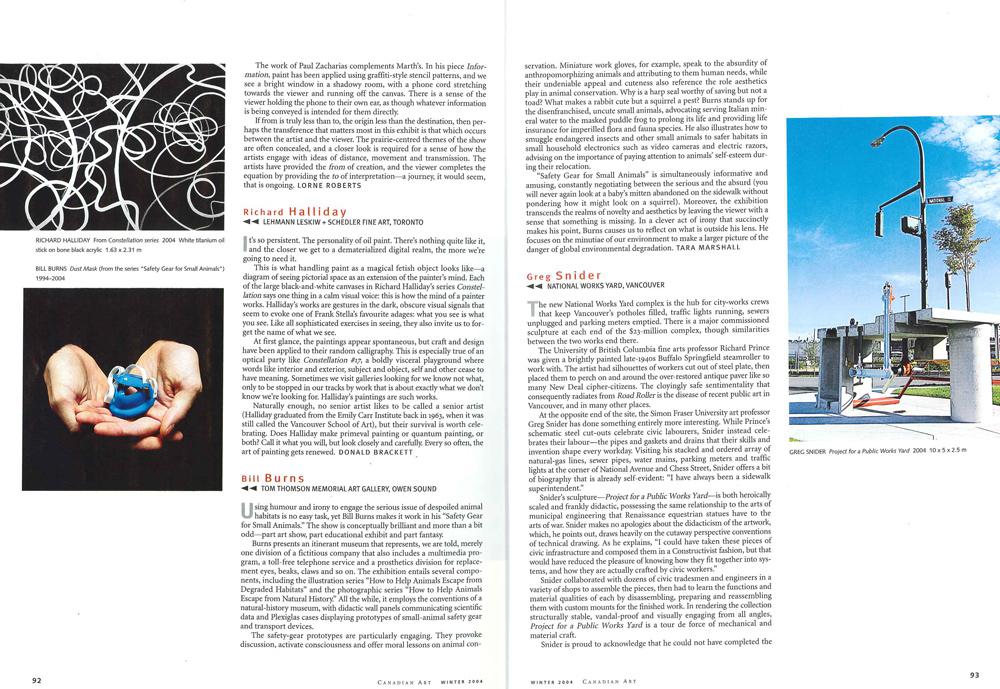Using humour and irony to engage the serious issue of despoiled animal habitats is no easy task, yet Bill Burns makes it work in his “Safety Gear for Small Animals.” The show is conceptually brilliant and more than a bit odd—part art show, part educational exhibit and part fantasy.
Burns presents an itinerant museum that represents, we are told, merely one division of a fictitious company that also includes a multimedia program, a toll-free telephone service and a prosthetics division for replacement eyes, beaks, claws and so on. The exhibition entails several components, including the illustration series “How to Help Animals Escape from Degraded Habitats” and the photographic series “How to Help Animals Escape from Natural History.” All the while, it employs the conventions of a natural-history museum, with didactic wall panels communicating scientific data and Plexiglas cases displaying prototypes of small-animal safety gear and transport devices.
The safety-gear prototypes are particularly engaging. They provoke discussion, activate consciousness and offer moral lessons on animal conservation. Miniature work gloves, for example, speak to the absurdity of anthropomorphizing animals and attributing to them human needs, while their undeniable appeal and cuteness also reference the role aesthetics play in animal conservation. Why is a harp seal worthy of saving but not a toad? What makes a rabbit cute but a squirrel a pest? Burns stands up for the disenfranchised, uncute small animals, advocating serving Italian mineral water to the masked puddle frog to prolong its life and providing life insurance for imperilled flora and fauna species. He also illustrates how to smuggle endangered insects and other small animals to safer habitats in small household electronics such as video cameras and electric razors, advising on the importance of paying attention to animals’ self-esteem during their relocation.
“Safety Gear for Small Animals” is simultaneously informative and amusing, constantly negotiating between the serious and the absurd (you will never again look at a baby’s mitten abandoned on the sidewalk without pondering how it might look on a squirrel). Moreover, the exhibition transcends the realms of novelty and aesthetics by leaving the viewer with a sense that something is missing. In a clever act of irony that succinctly makes his point, Burns causes us to reflect on what is outside his lens. He focuses on the minutiae of our environment to make a larger picture of the danger of global environmental degradation.
This is a review from the Winter 2004 issue of Canadian Art.

 Spread from the Winter 2004 issue of Canadian Art
Spread from the Winter 2004 issue of Canadian Art







